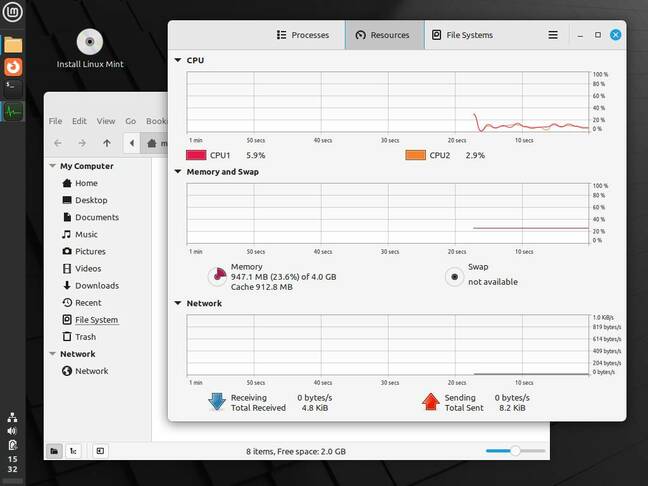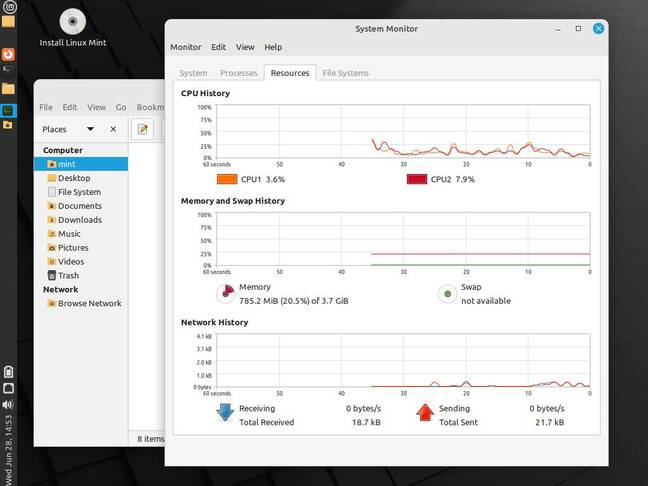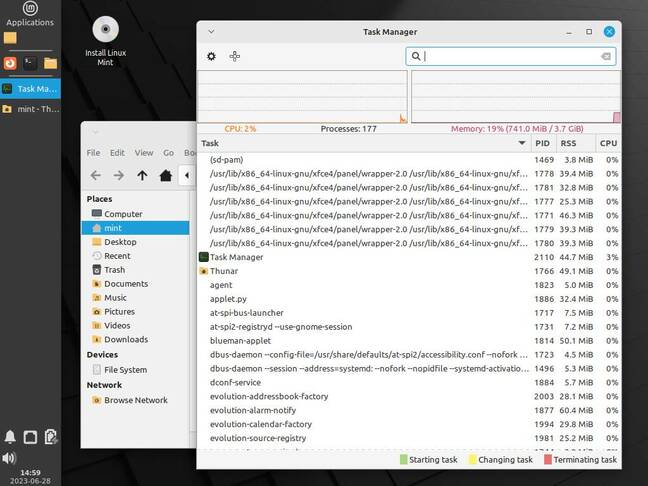Linux Mint cuts slice of 'Victoria' as 21.2 beta lands with dash of fresh Cinnamon
Desktop Ubuntu, but without the nonsense
It's been a while coming, but the beta of Linux Mint 21.2, codenamed "Victoria", is here with a new version of the Cinnamon desktop among other updated features to enjoy.
The news is spread across no fewer than nine pages, with separate announcements, lists of known bugs, and features lists for each desktop. Download links can be found in the respective beta announcement pages.
| Cinnamon | MATE | Xfce |
|---|---|---|
| Announcement | Announcement | Announcement |
| What's new | What's new | What's new |
| Release notes | Release notes | Release notes |
As with the distinct desktop editions themselves, there's a lot of overlap and duplication between these documents. For instance, the lists of known issues in the three sets of release notes are largely identical. It seems to The Reg FOSS desk that the development team could save itself – and news-hungry Mint fans – a significant amount of work by combining some of these pages into one overview.
We have previously covered some of what to expect from this release: the edition with the lightweight Xfce desktop gets Xfce version 4.18, for instance, while the Cinnamon edition gets the new version 5.8. The MATE desktop project hasn't put out a new stable version since version 1.26 back in 2021, so there's a bit less excitement for MATE fans who don't get a new version of their preferred desktop.

Mint 21.2's flagship Cinnamon desktop has a clunky vertical panel, with a two-line clock, and many applets afflicted by GNOME CSD syndrome, such as its System Monitor
For those folks who are happy using big modern trackpads, the new release gets significantly improved gesture support thanks to the inclusion of the Touchégg tool. This is especially well suited to Cinnamon, and enables window maximization, edge snapping, switching between virtual desktops and so on by placing multiple fingertips on the trackpad at once. The Reg FOSS desk favors middle-click support over multi-finger gestures, and so wherever possible uses more traditional pointing devices with three physical buttons, so we weren't able to test this properly.
Some new features are shared across all three editions. The login screen has better international keyboard support, tap-to-click on by default, and an improved onscreen keyboard with a choice of layouts. Mint's equivalent of an app store, the Software Centre, has been refined. There are new display themes, and tweaked appearances for tooltips and window control buttons. Where menu entries also contain icons, these now have a more consistent monochrome appearance, whereas apps with full toolbars now have full-color buttons.
- Rocky Linux claims to have found 'path forward' from CentOS source purge
- Red Hat strikes a crushing blow against RHEL downstreams
- Forester delivers bare metal remote provisioning to Fedora
- One person's trash is another's 'trashware' – the art of refurbing old computers
Small cosmetic touches like this are welcome and have helped Mint retain a clean, muted, businesslike appearance, while upstream Ubuntu and GNOME seem to be getting more colorful than ever – which isn't a bad thing in itself, but can be visually overwhelming.

Mint 21.2's MATE desktop with a vertical taskbar, including clumsy sideways text in the clock – but at least the system monitor has a menu bar
The author is an increasingly grumpy old git, whose shortsightedness is not improving with age. As such, we long for the complete banishment of trendy flat UIs. We would welcome a return to skeuomorphic, fake-3D buttons, scrollbars and other controls, but perhaps that is no longer feasible as upstream projects move to newer versions of Gtk and other toolkits that have removed support for such things.
So a trend that concerns us in this release of Linux Mint is visible in its new thumbnail manager for image files, called Pix. This, along with the Rhythmbox music player, Hypnotix streaming TV viewer, Celluloid movie player, Thingy library manager, and multiple small accessory applets such as the Calculator, System Monitor, Archive Manager and so on, are all borrowed from the GNOME project. As the "what's new" page puts it:
The new gThumb UI was adopted. It uses headerbars and buttons instead of toolbars and menubars. It's slightly less discoverable for newcomers but it looks very clean and remains quite intuitive.
What this means is that all these tools have UIs based around combined titlebar-cum-toolbar "CSD" controls, with hamburger menus. We could be wrong, but our feeling is that Linux Mint especially appeals to an audience of old fogeys like us, who dislike these UI innovations and actively prefer the old conventions and mechanisms. We would really like to see the Mint developers put more effort into finding alternative replacement programs which retain the traditional menu-and-toolbar UI. It is deeply disappointing to see Mint bringing in new-style GNOME controls when it's one of the foremost distros for people who dislike such things.
To pick a specific example, since there is already an edition of Mint which comes with the MATE desktop, we want to see the MATE System Monitor replace the CSD-blighted GNOME one in the Cinnamon edition too.
As with the ninefold new version pages, we feel that the Mint developers are missing out on a potential win for the project here: for each type of application, pick a single app with a conventional UI, either from one of the three desktops the project supports, or even from some other, external project, and supply that app with all of the editions.
Saying that, though, these are relatively minor details. Overall, Mint 21.2 is shaping up very well. We tested the beta on our trusty ThinkPad W520, and it ran flawlessly. The Driver Manager picked up the machine's Nvidia Quadro 1000M GPU, offered to install the correct driver, and correctly configured GPU switching without any further intervention.
We previously had an older version of Mint on this test machine, and the beta picked up our old home directory and settings, which included a vertical taskbar. The latest Cinnamon hasn't improved in this area: status icons still appear in a single column, wasting a huge amount of panel space. Similarly, in this orientation, the clock applet automatically splits across two rows: one for hours, the other for minutes. MATE doesn't handle vertical panels well, either; Xfce is still the winner in this department.
Notwithstanding some UI niggles, Linux Mint is arguably still the most sensible, pragmatic desktop Linux out there, although there's still room for improvement. If you want a highly compatible, versatile desktop OS, Mint outdoes both Ubuntu and Fedora. ®

 Biting the hand that feeds IT
Biting the hand that feeds IT